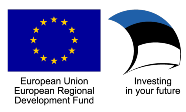Elements really are a smart way to build
LEARNING AND GROWING WITH CUSTOMERS
KMT’s primary export markets for wooden elements today are Finland, Sweden and Norway, known for demanding and discerning customers. But learning and growing together with loyal customers has expanded the company’s portfolio beyond wood to thermo-profile steel elements as well, leading to challenging assignments across Europe. For instance, the roof panels at both Gatwick and Heathrow airports were delivered by KMT in time for the 2012 Olympics in London.
Other noteworthy projects include the facilities for Facebook’s servers in Sweden and the largest hospital in Latvia. But one of the most difficult projects completed by KMT was the construction of a railway station in Norway. “We had to complete the project on time, but were only allowed to work 4 hours per day, as the station was in active use every single day,” Talts recalls. Another railway station in Sweden earned KMT the coveted special prize for timber use at the Prefab House of the Year 2020 competition held by the Estonian Woodhouse Association. Working simultaneously with wooden and steel elements has helped the company to hedge its risks and diversify the product and customer portfolio.
COMMUNICATION AND COORDINATION
“We strongly believe in customer loyalty and tend to work with clients on a long-term basis – our customer base has not changed much over time and this has given us an excellent starting position for tackling overseas markets. KMT steers clear of one-time projects, this focus on partnership means that one day we may deliver a steel frame hotel for a client, but the next day we’ll be building a wooden residential apartment for the same buyer,” states Talts. This has increased the range of KMT’s projects from private houses to public buildings, including apartment complexes, kindergartens, schools, hospitals, office buildings, railway stations and airports.
The key to success in Talts’s opinion is communication and coordination, as all projects require incredible efforts in pre-planning and considerable attention to detail, which all have to be agreed upon with the customer and other related parties. As a result, KMT takes great pride in stating that not a single shipment has been delayed throughout the years due to their fault. “We’re certainly not the economy choice for prefab building elements, but we provide excellent engineering skills, flexibility and loyalty.”

“MADE IN ESTONIA” IS A SELLING POINT
Although KMT’s key partners on international markets are renowned players such as NCC, Skanska and Hent, Talts believes that “Made in Estonia” has become a convincing selling argument on its own as well. “Estonians are known for delivering complex and demanding solutions to challenging projects, our engineering skills are second to none. We’re fearless in adopting new approaches for delivering the end result and are slowly but surely pushing our clients to ask for bolder and more innovative assignments – only their creativity can set the boundaries,” says Talts.
The construction industry is a conservative one by definition. Using prefab building materials requires considerable design work, planning and special skills. It may seem that assembling buildings on-site is quicker than traditional construction methods, but the preparatory work can be more time-consuming. “Simplicity prevails in the race against time and cost, forcing us to improvise as well.” All the prep work is akin to putting together an operating manual to ensure the smooth assembly work on-site, only this can deliver proper quality and the required efficiency.
THE KMT ELEMENT

Timber’s importance as a building material is globally on the rise, as more and more public buildings are constructed using renewable materials. Minimising residual waste and recycling materials form the foundation for an environmentally sustainable approach in prefab housing as well. “The more we can standardise production, the more sustainable and competitive the prefab business will become. However, we insist on delivering architecturally interesting results – even prefab houses can and must look cool. It’s challenging to automise tailor-made solutions, but their production has to be simple enough,” Talts explains the core of KMT’s philosophy.
“The more we can standardise production, the more sustainable and competitive the prefab business will become. However, we insist on delivering architecturally interesting results – even prefab houses can and must look cool. It’s challenging to automise tailor-made solutions, but their production has to be simple enough,” Talts explains the core of KMT’s philosophy.

Award-winning housing project Krøyers Plads in Copenhagen harbour, completed by Vilhelm Lauritzen Architects and COBE, 2014. Photo ©Dreamstime






